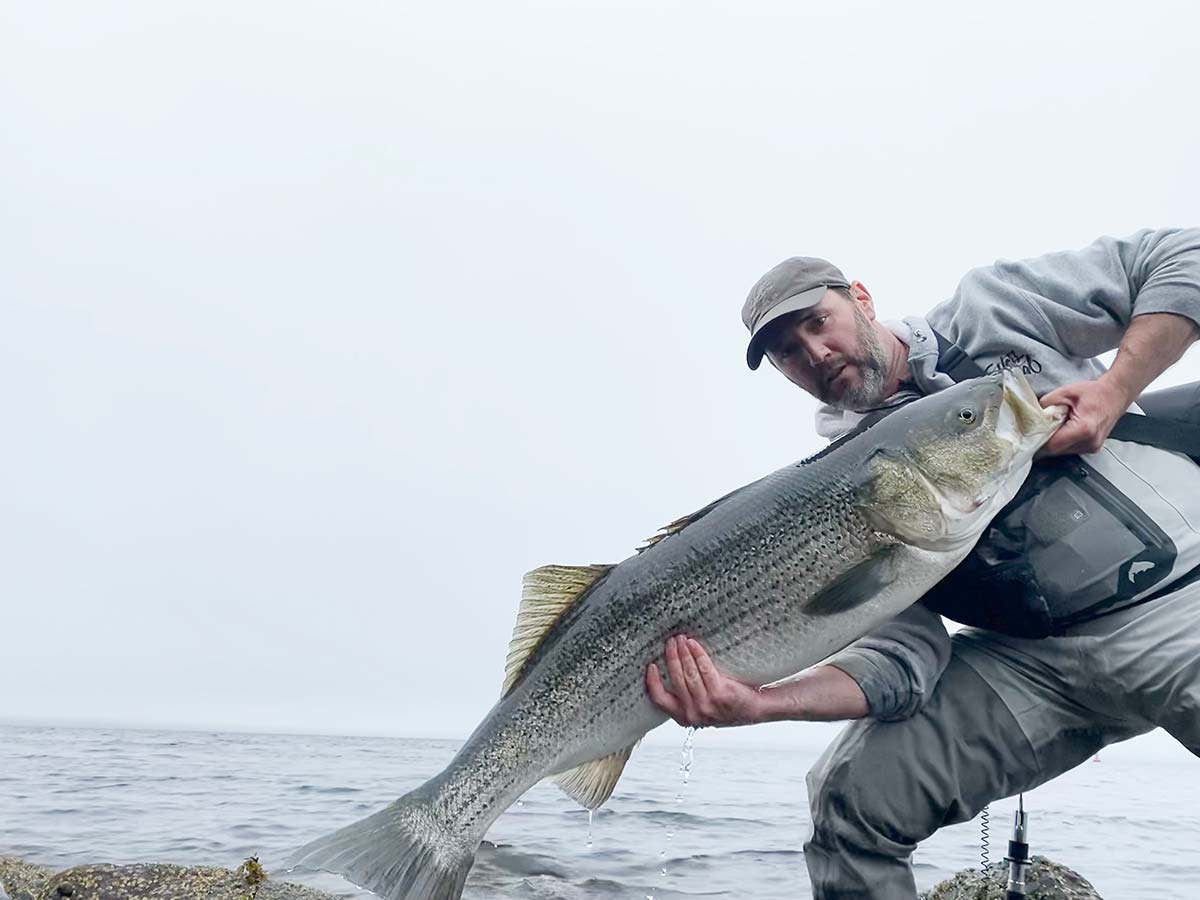
Schools of bunker do not always translate to better fishing, but exploiting certain feeding tendencies of stripers can increase your odds.
The presence of bunker can produce epic results in the surf and it can also translate to hours of frustration—I’ve seen both sides of that coin. One day about six or seven years ago I took my daughter for a ride hoping to get her to nap, as we drove along the ocean I spotted several large pods of adult bunker. Of course, I pulled over to investigate, but I couldn’t fish with a baby on my shoulders, so I watched a few casters smashing big blues on poppers. Word on the beach was that there had been some decent bass on them the day before—my wheels began to turn. Skip ahead to that night, I fished among schools of adult bunker in a state of Zen-like calm, there seemed not to be a predator for miles and I went home without a hit.
Visionary Exploitation
I want to start by saying that schools of bunker are not all that common where I fish, and when they show up, they have a tendency to throw off well-established patterns and I don’t get super excited to see them most of the time. My experience has been that when bass (or bluefish) feed heavily on bunker during the day, they are relying on their eyesight to hunt and feed and when the lights go out, the bite often slows way down or shuts off completely. So one of the best moves a surfcaster can make when bunker are present, is to fish in daylight. Daylight fishing for bunker-drunk bass can be amazing. The fish get very competitive and key in on movement. When they detect something moving, they rush up on it, often several fish will make an advance at the same time. They often seem to take on a ‘punch first, ask questions later’ attitude because their priority, in these competitive feeding scenarios, is to get there first.
This is a situation that can be exploited. You have to, sort of, think for your plug. Consider how a bunker that’s trapped on the surface might react to being surrounded by a pod of large, competitive stripers. This is not the time to throw your big, lazy surface metal lip, a bunker in that situation is going to click into freak mode and try to escape with speed—your plug choice should reflect this fact. Big, splashy, fast-moving plugs are going to draw the most attention. Magic Swimmers, big pencil poppers, SplashWalks and the Doc are all great choices. Large soft plastics on swimbait hooks will also draw vicious strikes. Whatever you choose, it needs to be able to retrieved between fast and ludicrous speed, (yes that’s a Spaceballs reference). Fish like you’re trying to take it away from the bass and they will react with heart-stopping strikes that will remain imprinted on your DNA for the rest of your life.
Dark Mode
The way I have been successful targeting bunker-fed bass after dark is to exploit their love of ambushing prey. If the bunker and bass are spread out in a large bay or along the oceanfront, I’m not excited. So instead, I look for points of passage; a narrow spot in the bay, an inlet mouth, a confluence of two larger bodies of water, or (on the beach) a big point, outside corner or a long jetty. The things that all of these structures have in common is that they are very likely to form a rip and speed up the current and they force baitfish to pass around them, setting up a classic ambush scenario.
My best results have come casting through long windows in the tide, and using lures that allow me to deliver a large profile near the bottom. A Tsunami 9-inch swim shad is a good bet or any large soft plastic on a leadhead, I have a special place in my heart for deep-running metal lips, trollers are also a good choice. No matter what I’m fishing, when I get my lure into, what I feel is, the strike zone, I try not to influence it too much. I want my lure to swing through that zone as naturally as possible and I find that I get a huge percentage of my hits when that lure is just drifting through, being held at depth. The stripers stage in these areas because they find reliable success in these situations, waiting for some bunker to drift around that corner or over that edge where they can surprise their prey. I believe they are used to seeing baitfish drift through riding the current and that’s what they’re expecting to see, when you can present your lure in a way that seems familiar to the fish, your chances of hooking up increase exponentially.
As I’m sure you can tell, I have a bit of a love-hate relationship with bunker, and my results may not align with yours. But I can tell you, with absolute confidence, that these methods work and thinking within the feeding mode of your target species will – absolutely – make you a better and more successful surfcaster.




